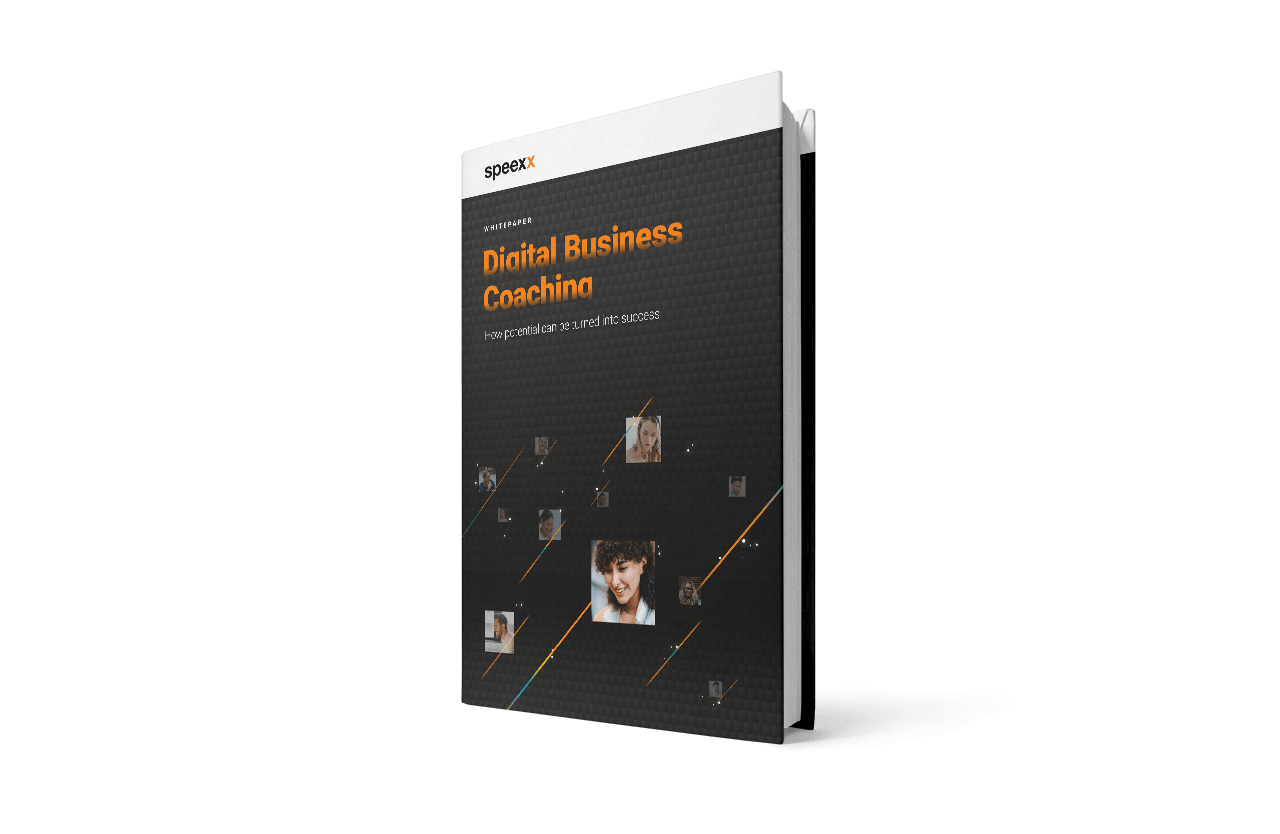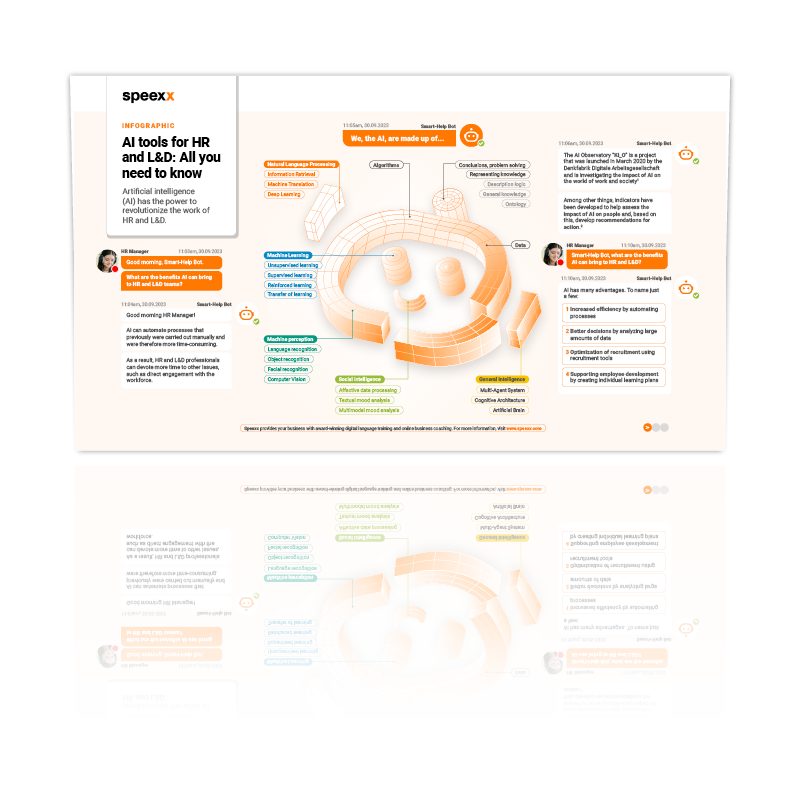In the spirit of Valentine’s Day, we turn our attention to matchmaking of a professional kind. Believe it or not, finding the right professional trainer, coach, or mentor can now mirror the way many of us search for dates or life partners. If platforms like Tinder or Bumble can successfully connect romantic partners, why couldn’t a similar approach work in a professional context? The same algorithms that facilitate romantic connections can be adapted to match professionals with the ideal coach or mentor, ensuring a perfect fit for their development needs.
At Speexx, our expertise in people development deeply explores the process of optimizing professional skills. Whether through business coaching, mentoring, or AI language training programs, identifying the most effective method for skill improvement is key to achieving the desired outcomes. Much like the quest for a compatible partner, understanding and aligning with the unique characteristics and requirements of each participant is crucial. This approach guarantees the ideal mix of human interaction and teaching methodology, setting the stage for meaningful growth and lasting results in the workplace.

Choosing Your Upskilling Adventure: Training, Coaching, or Mentoring?
Understanding the variety of upskilling modalities is crucial in selecting the right approach for the right individual. This is a subject we highlighted in our article on the practical differences between training, coaching and mentoring as each approach offers unique benefits and outcomes. In summary:
- Training is either synchronous (live) or asynchronous (self-paced), characterized by the systematic transmission of knowledge from an expert (or through structured content) to a learner. This method is ideal for acquiring specific skills or knowledge efficiently.
- Coaching establishes a respectful and equal partnership between the coach and client. It’s a collaborative process aimed at setting and achieving clear objectives, where the coachee, with the coach’s support, independently develops strategies for success. Professional coaches bring a wealth of experience to help individuals and organizations navigate complex challenges, enhancing self-reflection, personal performance, and professional growth.
- Mentoring involves experienced professionals guiding less experienced mentees, sharing knowledge, skills, and insights to nurture the mentee’s career development and personal fulfillment. Mentors can be internal to an organization or selected externally, playing a pivotal role in the mentee’s professional journey.
Each of these methods is uniquely suited to specific profiles, situations, and skills, ensuring tailored and effective skill acquisition or enhancement.

Find out how business coaching can be your strategic ally.
Horses for Courses: Matching Methods to Skills Development
At risk of being controversial, we assert that not all training methods suit every skill equally. For instance, mastering leadership—a skill deeply rooted in behavior—cannot be achieved through a mere 20-minute video. This complex skill demands ongoing practice, experimentation, and sometimes, significant adjustments or a complete shift in approach. On the other hand, acquiring a technical skill, for example taking a digital marketing course, can be effectively managed through non-real-time (asynchronous) methods like videos or reading materials, followed by an assessment to confirm skill acquisition.
Advantages of a Comprehensive Approach
While skill development isn’t always a black-and-white matter, certain competencies benefit from a blend of non-real-time (asynchronous) activities like microlearning, as well as more targeted follow-ups, either in groups or one-on-one, emphasizing interactive learning and a dynamic between the learner and the expert. Language training serves as a prime example. Microlearning can effectively gauge an individual’s skill level, maintenance, and new knowledge acquisition through repeated use. However, for those aiming for significant improvement, such as advancing from a B1 to a B2 language level, a more tailored approach is necessary. In this case, the presence and dialogue with a trainer – preferably a certified one – becomes fundamental for meaningful progress.
Matching Skills Development with Learner Preferences
The key to effective skill development lies in tailoring approaches to both the nature of the skill and the learner’s unique circumstances. However, it’s crucial to go beyond this broad principle. For long-term skill acquisition, learners must find the methodology comfortable and conducive to establishing a productive learning routine. This means identifying a learning style — be it directive, analytical, or experiential — that not only suits their cognitive preferences (kinesthetic, visual, auditory) but also encourages sustained engagement.
For L&D managers, curating your training portfolio is equally important. As highlighted by Michel Barabel in a webinar (French) on the evolving training landscape, the surge in digital learning solutions has expanded options but also risked overwhelming learners with redundant choices. This phenomenon, which echoes the paradox of choice in a vast menu, underscores the need for strategic selection. Just as in finding the perfect Valentine, today’s L&D role has evolved into that of a matchmaker: connecting employees with the most suitable training resources. By acting as educational consultants, L&D professionals can steer employees towards the most effective learning pathways for their development goals.
The Art of Matchmaking in Skills Development
Effective skills development requires addressing both its structure – how the programs are organized and delivered – and substance, i.e. the content covered within these programs. What is often overlooked – but is of equal importance – is pairing the right coaches, mentors, or trainers with the participants. The learning process, after all, is akin to forming a meaningful relationship, where compatibility and mutual understanding lay the foundation for success.
First of all, choosing fully qualified coaches, mentors, or trainers is paramount. Building a comprehensive roster internally, especially for international organizations, is often unfeasible. Therefore, partnering with a reputable service provider that boasts a vast network of certified professionals is a solid strategic move. Verifying the credentials of these professionals (such as EMCC, ICF certifications) and the quality of the provider’s training programs is also essential to ensure the course facilitators are of the highest caliber.
Secondly, matching employees with the most compatible coach or mentor goes beyond mere qualifications. Successful pairing depends on alignment in experience, expertise, pedagogical approach, and having the right chemistry. The responsibility for facilitating such meaningful matches shouldn’t fall solely with the organization’s training department. A capable service provider should offer a comprehensive solution, efficiently pairing employees with the right guide, while allowing for adjustments based on the learner’s feedback and evolving needs.
AI Optimization of Coach-Employee Pairing
The integration of AI into the matching process between coaches and coachees is a breakthrough innovation. AI’s capability to sift through extensive data on employee skills, experiences, ambitions, and preferences allows for the pairing of individuals with the most compatible mentors or coaches. This tailored approach ensures that coaching is not only relevant but also highly effective.

Discover what AI can do for you on a daily basis
The Benefits of AI-driven Matchmaking
- Personalization: AI’s analytical power enables matches that closely align with an individual’s specific needs, greatly enhancing the potential for successful outcomes in coaching relationships.
- Efficiency: AI streamlines the matchmaking process, cutting down the time to connect employees with suitable coaches, thus accelerating the onset of their developmental paths.
- Broader Access and Diversity: By leveraging technology, organizations can offer access to a varied pool of coaching talent beyond geographical and industry limits, diversifying and enriching the coaching experience.
- Continuous Monitoring and Adaptation: AI tools not only assist in initial matchmaking but also support ongoing assessment of coaching effectiveness. This enables timely adjustments to coaching strategies, ensuring they remain aligned with evolving goals and performance metrics.

AI Cupid: Coaching and Beyond
Just as Valentine’s Day prompts us to celebrate successful romantic partnerships, investing in a system that provides a professional coach or mentor tailored to each employee demonstrates a company’s long-term vision and commitment. Integrating AI into this process isn’t just a matter of convenience or efficiency; it’s a strategy that can transform talent development, aligning individual aspirations with organizational goals. As we move further into the digital age, organizations that embrace these innovative technologies to support the development of their teams will be the ones that stand out and succeed in the global competitive landscape.
Adopting a personalized coaching or mentoring approach for each employee reflects a company’s commitment to the future of its workforce. The integration of AI into the matchmaking process isn’t just a matter of convenience or efficiency; it represents a forward-thinking approach to reshaping talent development. This strategy ensures a harmonious alignment between the individual’s career ambitions and the broader objectives of the organization. In an era increasingly dominated by digital innovation, companies that leverage such technologies to enhance their team’s growth will distinguish themselves and thrive in the competitive global market.
